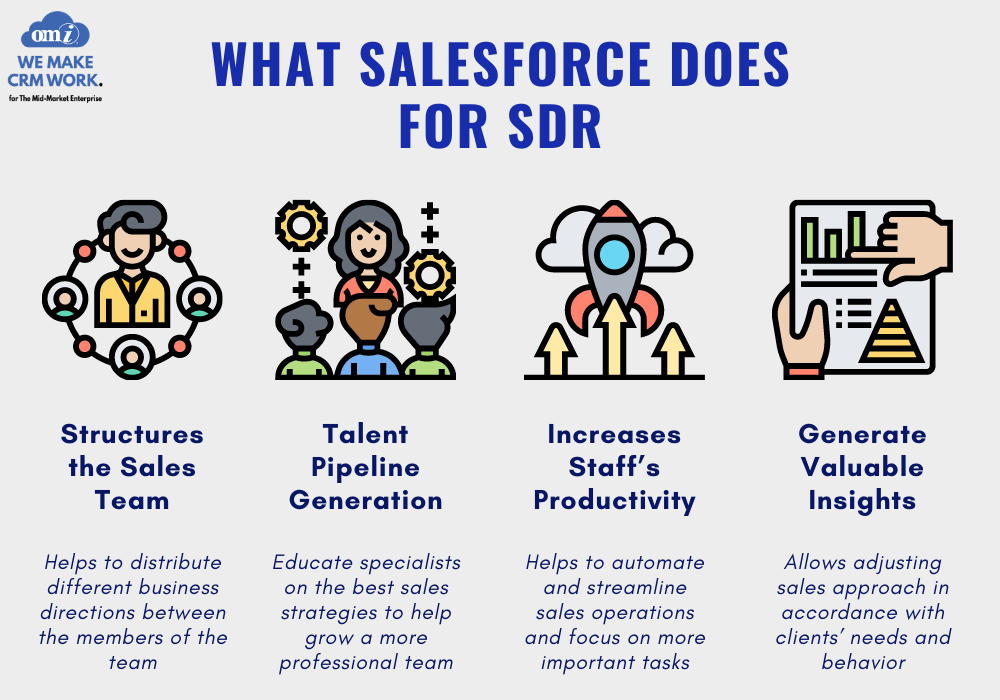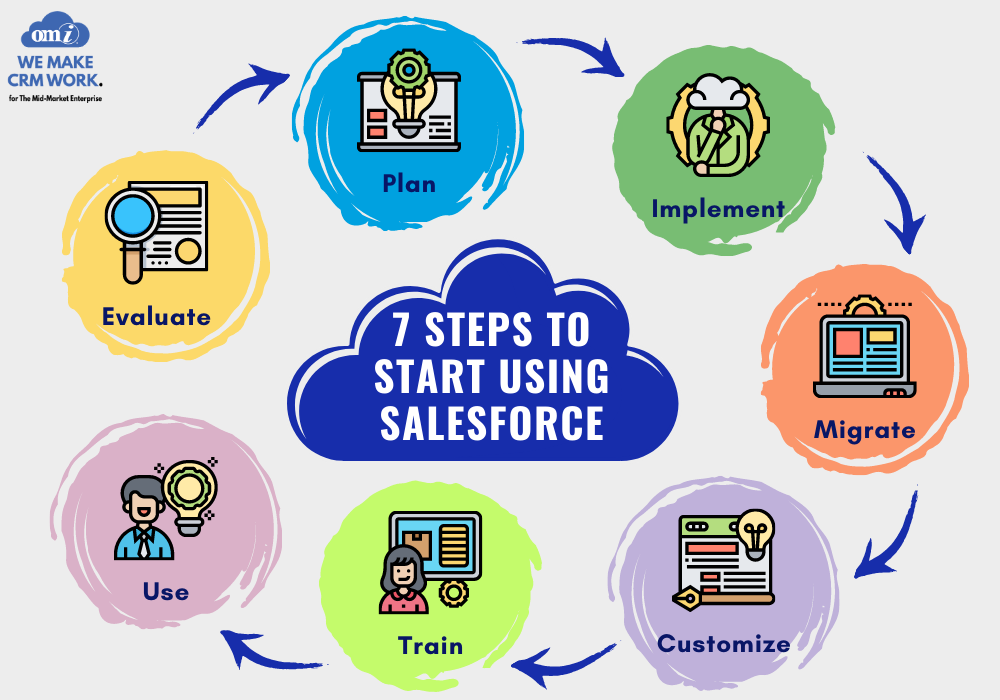In our series of articles related to sales development, we’ve already shared the best practices every SDR should know about. Being able to integrate and use a proper CRM platform is one of the keys to the future success of your business. This time we’ll tell you more about the advantages of Salesforce over other CRMs and how your sales development department can benefit from its features.
What Does Salesforce Do for SDRs?
When you are looking for a CRM to be introduced to your organization, with no doubt Salesforce will be the first and most right choice. Integrating Salesforce into the company’s existing infrastructure takes time, knowledge, and professional support and is worth the effort. Key Salesforce benefits over other platforms include everything from automation and accurate reporting to full customization.
Sales development teams, as well as their executives, can take maximum advantage of Salesforce for their day-to-day tasks and the overall sales management process. However like any other tool, CRM needs to be adjusted to serve your business through customization and integrations with existing solutions. Here are only a few examples of why customizing Salesforce is important for your business.

Structuring the sales team
Salesforce allows creating specialized and generalized sales development teams inside the organization. Specialized SDRs are responsible for handling specific inquiries from potential clients. For example, if your company has 5 different types of services or product categories, there are likely to be 5 specialized sales development teams to handle requests on each of them. Meanwhile, generalized SDRs can reach out to prospects and contact leads to help them with any type of inquiries. It’s up to you to decide what type of teams you want to create with Salesforce for your business.
Generating talents
Such tools as Salesforce helps sales teams to evolve as specialists and learn how to qualify leads properly. Besides, it helps them to educate themselves on different sales techniques and methodology, business analysis, and other important elements of a successful sales strategy. As a result, SDRs can be promoted to BDR, account executives, and other top positions in the inside sales. We’ve previously described a common structure of an inside sales team in our SDR vs BDR article.
Enhance staff’s productivity
Salesforce helps to streamline daily operations, manage contacts, and outreach prospects and leads via a single platform. As a result, sales teams don’t waste their time on repetitive tasks and can spend more time on personalizing their approach to each segment of clients.
“Salesforce is our main system which we use to house all of our prospects, contacts, and customers’ data. I often run reports in Salesforce to pull certain contact or company lists which I can then upload into Outreach to perform bulk actions”, says one of the SDRs we’ve interviewed.
Getting valuable insights
Salesforce allows tracking various kinds of metrics to provide sales teams with relevant data on their performance. It helps SDRs and other sales and business reps to learn from every action they take. Besides, Salesforce delivers valuable insights into your products/services, as well as your customers’ behavior helping your sales teams to give your potential clients what they need and when they need it.
How To Use Salesforce for Sales Development?
There are several steps every company needs to take in order to successfully implement Salesforce in their business environment.

- Evaluate. Identify your business goals and pain points, to see whether Salesforce can help you cover them all and help your sales development team to work better. Without an accurate business analysis and evaluation, it’s impossible to implement such a tool properly.
- Plan. Decide whether an out-of-box solution can cover your needs or your company requires a custom solution. We recommend hiring experienced Salesforce consultants to guide you through the whole implementation stage.
- Implement. Every step of Salesforce implementation should be well thought-through to make sure it world perfectly with your company’s existing IT environment.
- Migrate. Data migration processes help to ensure no information on your customers, employees, and business partners is lost.
- Customize. Salesforce is a customizable platform that can be adjusted to the specific needs of your sales team. It allows ensuring your sales reps only have tools they need and can benefit from.
- Train. Provide your employees with training to make sure they know about every benefit of the platform’s features and how to use them to improve the quality of their work.
- Use. Let your teams take maximum advantage of using Salesforce. If it is properly integrated with your business environment and your SDRs know exactly how to use it for their own benefit, the results will be about what they should be.
If you are looking for professional support to help your company with a proper CRM implementation, look no further than Salesforce services by OMI. Our team will accurately evaluate your business and offer solutions to take your company’s performance to the next level.
